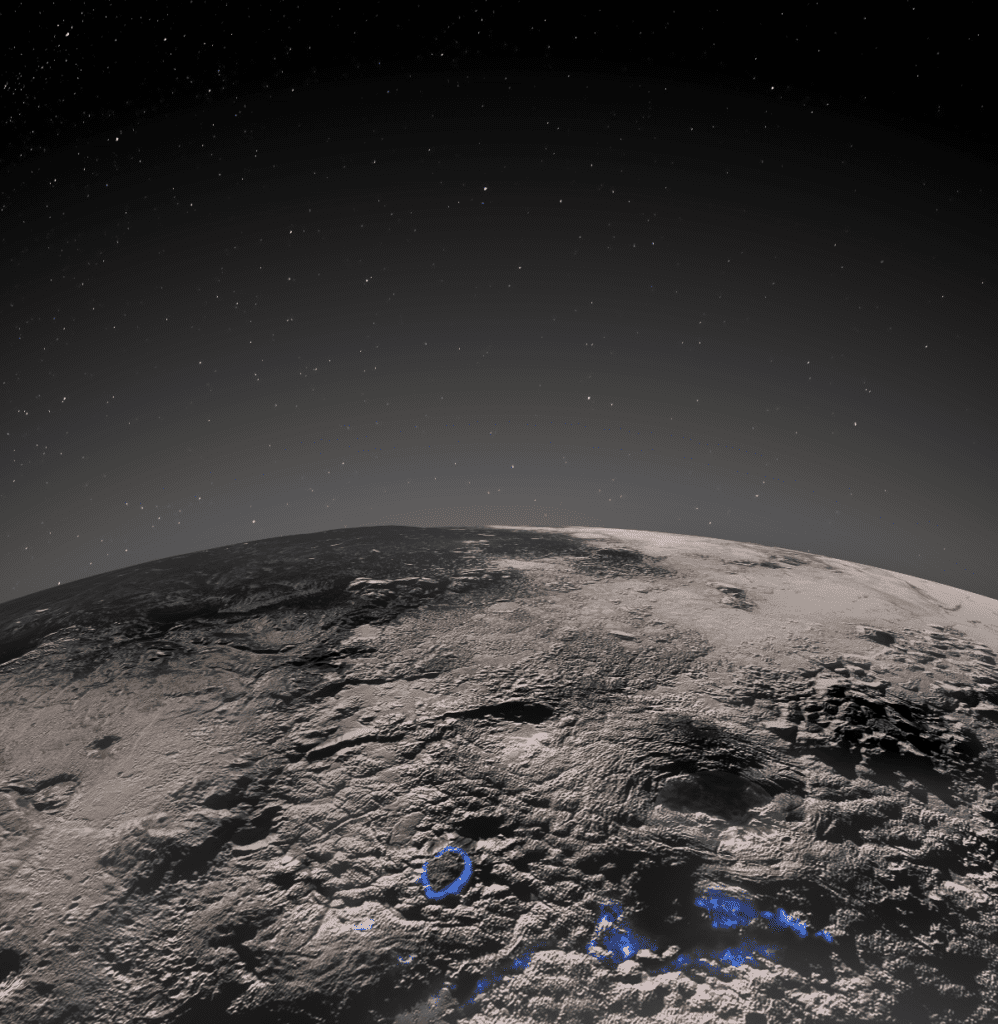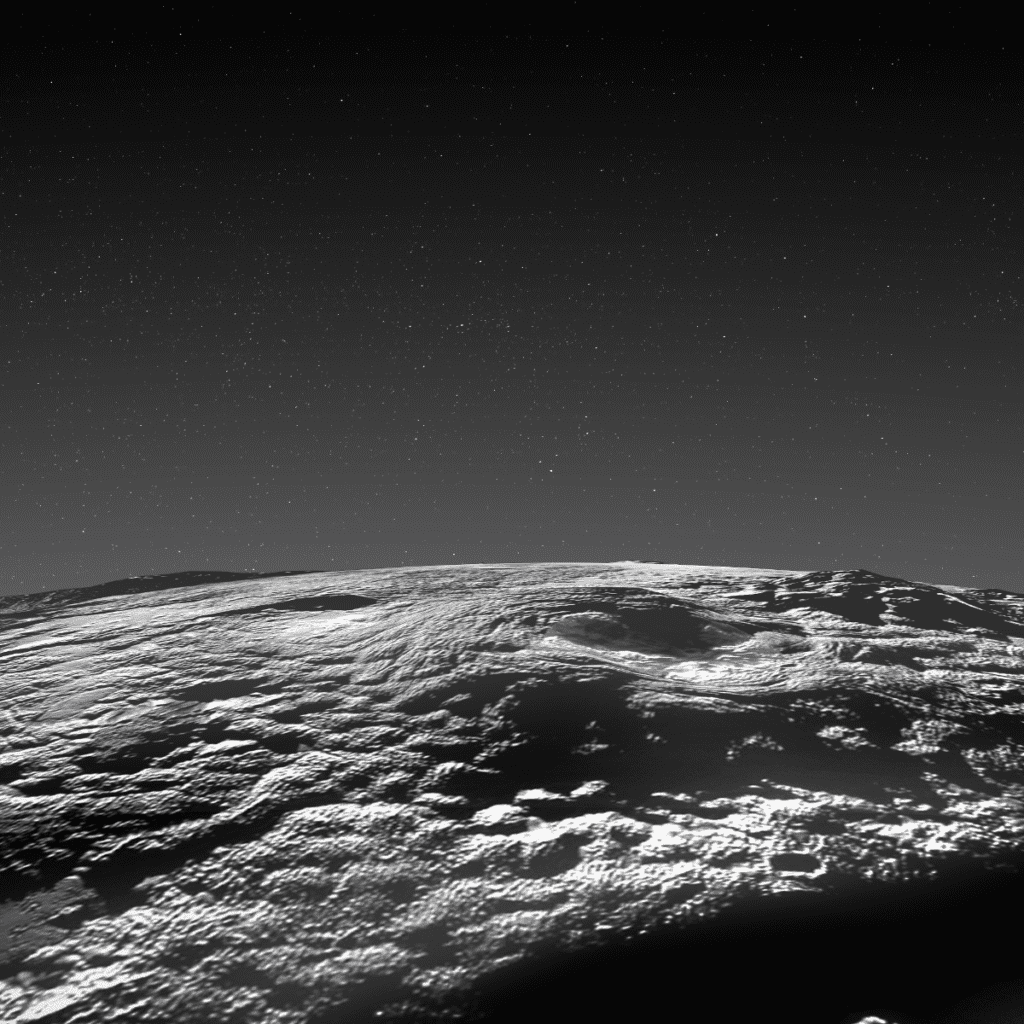
Just because Pluto isn’t a planet anymore (well, that’s a different discussion), doesn’t mean it’s not interesting; quite the opposite. Much of what we’ve learned about Pluto in recent years describes it as an active, intriguing place — and this latest study is no exception.
Researchers analyzed images from NASA’s New Horizons spacecraft, finding that the dwarf planet is dominated by relatively recent volcanic activity, with volcanoes up to 7 km (4.3 miles) tall. These aren’t “regular” volcanoes, either — they’re ice volcanoes, or as scientists call them, cryovolcanoes.
“These cryovolcanoes are very large and very strange-looking, so we knew that the features themselves existed since the first pictures of Pluto were sent back in July of 2015 by the New Horizons spacecraft,” Kelsi Singer, a planetary scientist and deputy project scientist of NASA’s New Horizons mission, told ZME Science. “However, we weren’t quite sure what they were because they are different than anything else in the solar system. After examining all of the data sent back by New Horizons, including images, composition data, and the topography of the features, we realized the best way to form these features and really the only way given the data was through icy volcanism.”
Singer and colleagues analyzed images covering a large impact basin, looking at the geology and geomorphology of the area. Judging by the aspect of this area, Pluto has a bunch of tall volcanoes, including a large structure that appears similar to Mauna Loa in Hawai’i, one of the biggest volcanoes on Earth.
Pluto has a rocky core that produces heat just like the Earth, through the decay of radiogenic elements, Singer explains. But Pluto is much smaller than the Earth, and produces far less heat in its interior.
“Therefore, we thought that Pluto would not be able to have much geologic activity occurring at the present. But these young features mean that there must have been a larger heat source than expected to allow icy material to be mobile on the surface of Pluto at least for long enough to form these features,” Singer told ZME Science.
Because there’s less heat inside Pluto, these volcanoes don’t erupt molten lava like on Earth, but rather a mixture of liquids. Singer says it’s not likely liquid water that these volcanoes are erupting, but more of a “slushy” liquid.

The terrain that the researchers analyzed here is not marked by impact craters, which suggests it’s relatively young in Pluto’s geological history. In turn, this also means that the volcanoes there are relatively young. But there are still many things we don’t know about them, the researchers emphasize. These volcanoes likely formed through several episodes of materials extruding onto the surface, but we don’t know if that’s still occuring today and if the volcanoes are still active, but they “definitely could be,” Singer says.
But the volcanoes are unique in our solar system, and they’re so special that they could not just tell us a few things about Pluto, but about how cryovolcanism works in general.
“We found a large field of icy volcanoes unlike anything else we have seen in the solar system. This both tells us that Pluto is more geologically active in its recent past than we thought, and it is helping us understand how icy volcanism can operate,” Singer notes.
It’s striking that we can tell so much about something so far away. Pluto lies over 4.6 billion kilometers away from Earth, and up until recently, our best images of Pluto were little more than blurry, pixelated mugshots. But the New Horizons mission changed all that. The mission was launched back in 2006, and approached Pluto in 2015, sending a trove of images for analysis. There’s still plenty of images left to analyze, and the data is available for everyone.
“Planetary science is both challenging and rewarding. It is amazing that we as human society have these images of many places in the solar system so we can better understand how the solar system formed. Every time we go somewhere new we find things we weren’t expecting, and that allows us to learn new things! The images and data from the New Horizons mission are publically available to anyone around the world to look at and analyze,” Singer adds.
As for Pluto, the research is merely beginning. There are plenty of mysteries left to uncover at the edge of the solar system, and doing so will require a lot more work. In addition to analyzing images, Singer and colleagues want to do a lot of modeling and laboratory work to understand how the materials on the surface of Pluto operate at such cold temperatures.
The study has been published in Nature.


